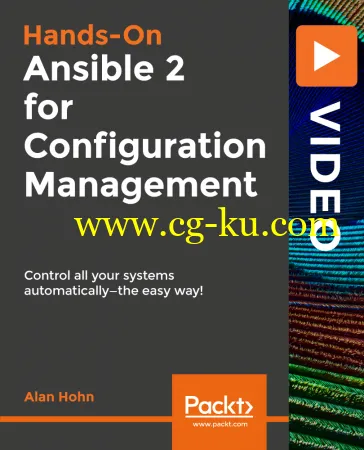MP4 | Video: AVC 1920×1080 30fps | Audio: AAC 48KHz 2ch | Duration: 3h 25mGenre: eLearning | Language: English | Size: 708 MBPerform powerful automation to get consistent and correct configurations every time with Ansible 2LearnInstall, configure, and maintain a group of servers by automatically managing system configurations using Ansible 2Simplify automatic configuration management by applying each automated step the same way, every time, thus guaranteeing reliabilityQuickly adapt and apply automated installations and configurations to your own systems by working on practical examplesBuild your own custom Ansible roles and modules so you can use Ansible to its full potentialPerform any automation task (no matter how complex) with ease using AnsibleAboutConfiguration management is complicated, with a need for high availability, failover, and continuous updates and maintenance.
Ansible 2 is a powerful automation tool that can help you manage the configuration of all your servers, whether you work on-premise or in the cloud.
With this course, you can quickly start using Ansible to automate the installation, configuration, and updates, ensuring that your systems are configured the right way automatically.
You will then customize Ansible’s behavior with variables, and apply similar automation to groups of servers.
Next, you will work with roles, which will give you the ability to perform any required automation on your servers when it comes to installing, configuring, and running software.
You’ll manage servers and other resources in Amazon Web Services, then build Docker containers to deploy them to Kubernetes.
You will also work with Ansible’s power-user features with custom facts and custom modules.
By the end of the course, you will have worked through hands-on examples of Ansible 2 configuration management, enabling you to immediately start automating your own systems.
The code bundle for this video course is available at –FeaturesThis course is a complete introduction to Ansible 2 and will show you everything you need to start using it to automate and manage your system configurationsHands-on examples take you right from the process of performing basic tasks with Ansible all the way to controlling multiple servers with your own custom Ansible automation modulesCovers the latest Ansible features, including automating Docker and Kubernetes

